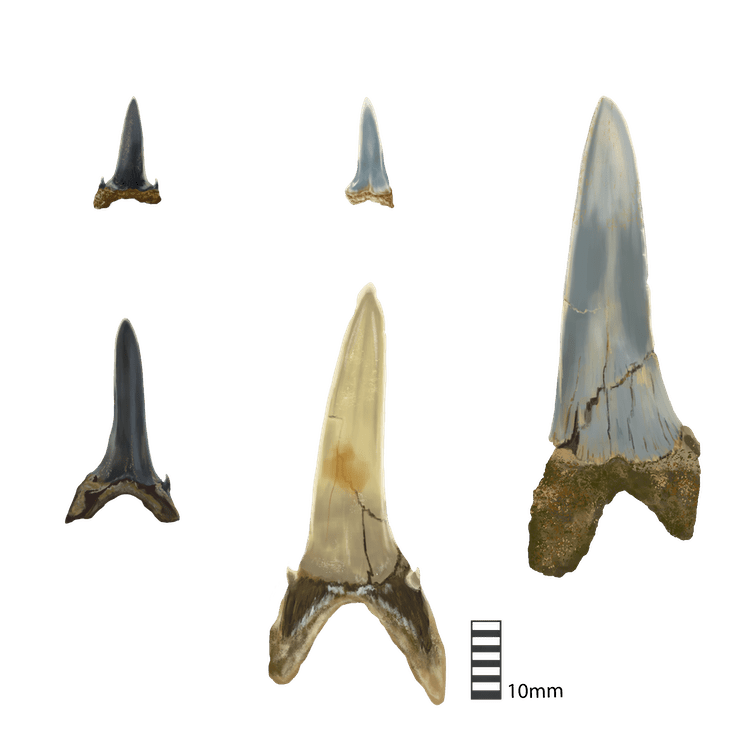The Eocene was the hottest period in the past 50 million years. With temperatures some 13 °C hotter than today, no ice around the poles, and mammals just starting to take over the world, our planet was a very different environment. But something weird happened. Some 50 million years ago, the climate transitioned from a “greenhouse” to cooler “icehouse” conditions, which impacted the evolutionary history of flora and fauna.
Teeth from an ancient shark could now help us understand what happened.

Researchers have worked on several theories about what drove this climate shift, some focusing on Antarctica due to its contiguity to tectonic gateways and amplified temperature effects at high latitudes. The tectonic theory notes that as the Australian and Antarctic tectonic plates were spreading apart, this produced increased volcanism and CO2 emissions.
The Antarctic also played a key role in the eventual cooling — once the oceans around it began to freeze, Antarctic waters sent cold water and icefloes There’s evidence, for example, that the Drake Passage and the Tasman Gateway (two now-icy passages around the Antarctic) widened and deepened during this time.
The wider and deeper passages would have been necessary for the waters of the major oceans to come together and the Antarctic Circumpolar Current to form, studies showed. That current, which currently flows around Antarctica, traps cold waters in the Southern Ocean, keeping Antarctica cold and frozen.
In a new study, researchers from the University of California analyzed the chemistry preserved in the teeth of the now-extinct sand tiger shark species Striatolamia macrota. The shark used to hunt in the waters off the Antarctic Peninsula tens of million years ago and left well-preserved fossil teeth in what’s now Seymour Island.
“By studying the chemistry preserved in these shark teeth, my colleagues and I found evidence of when the Drake Passage opened, which allowed the waters of the Pacific and Atlantic oceans to mix, and what the water felt like at the time,” lead author Sora Kim wrote in a commentary. “The temperatures recorded in shark teeth are some of the warmest for Antarctic waters.”
Teeth filled with information
For the study, the researchers studied 400 teeth from Seymour Island from all ages of sharks, which lived between 45 million to 37 million years ago.

Sand tiger sharks have sharp teeth that protrude from their jaw to grasp prey. They have hundreds of teeth on multiple rows, and over a lifetime, they shed and regrow thousands of teeth. Each tooth contains important environmental information, which is encoded within its chemistry and preserved there over millions of years. Essentially, a tooth can serve as a proxy, telling researchers information about the waters in which it was formed.
The outer layer of the teeth is formed by an enamel-like layer, with oxygen atoms from the water the shark lived in. The researchers analyzed the oxygen to determine the temperature and salinity of the water and found that the Antarctic waters stayed warmer than previously estimated.
“It’s possible the difference was between waters closer to the surface and deeper on the sea floor, or the sharks whose teeth we found may have spent part of their lives in South America,” Kim wrote.
The modern-day analog of sand tiger sharks spends summer and early fall between coastal Massachusetts and Delaware. When the waters cool off, they migrate to North Carolina and Florida. The researchers believe that ancient sand tiger sharks also migrated when Antarctic waters cooled off, heading north to warmer waters.
Carbon dioxide concentrations in the teeth were 3-6 higher than today, which indicates the atmospheric levels of C02 were also much higher than they are today — which fits with an overall higher temperature.
Another finding came from the element neodymium, which adsorbs and replaces other elements in the outer enamel-like material of the tooth during early fossilization. Its analysis provided the researchers with the earliest chemical evidence of water flowing through the Drake Passage, which aligns with existing tectonic evidence. If conditions are stable, the neodymium would remain stable through the years, but if the neodymium composition does change, it means that there are changes in oceanography.
“The early timing of the Drake Passage opening, but the delayed cooling effect, indicates there are complex interactions between Earth’s systems that affect climate change,” Kim wrote.
Ultimately, although the sand tiger sharks went extinct, other relatives managed to adapt to the changing conditions. However, the current climate events are different from the ones in the Eocene, because they happen much faster and leave less time for adaption. In addition, the current events are also coupled with other stressors, like pollution and shrinking ecosystems.
The study was published in the journal Advance Earth and Space Science









